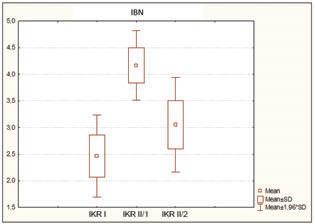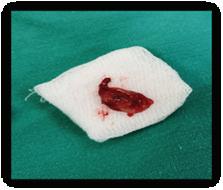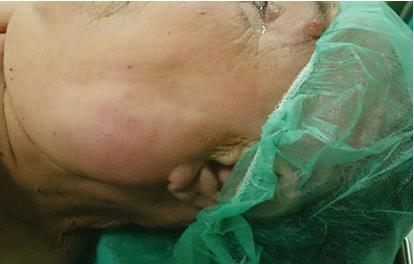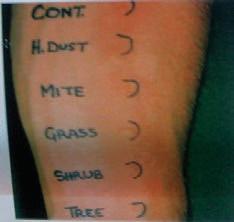
11 minute read
ROLE OF OKLUZAL TRAUMA IN PROGRESSION ON PERIODONTITIS
UDK: 616.314.17:616.31-001.6/.7 PUNIM BURIMOR SHKENCOR (PBSH)
UDK: 616.314.17:616.31-001.6/.7 ORIGINAL SCIENTIFIC PAPER (OSP)
Advertisement
1Faculty of Medical Sciences - University of Tetova 2Private health Hospital “Remedika”, 16th Makedonska Brigada” 18, Skopje 1000, R. of Macedonia 3Private health Institution “Dentalcair”, Skopje Email: marijanakova@yahoo.com
ABSTRACT
We followed 60 patients with periodontal disease, 30 of them were as a risk factor with present traumatic occlusion, conditioned by inadequate chargers, titan prosthetic recoveries and extracted teeth and not reimbursed and 30 patients without the presence of this risk factor. Patients were followed clinicians and with x-ray. The main attention was addressed to the impact of occlusion traumatism on the destruction of the alveolar bone, which values were express by Miller-Pelzer-Hirschman index as decay through the Wasserman index.
The results showed statistical important differences between bone destruction of the alveolar bone in patients with traumatic occlusion compared with patients without traumatic occlusions (t-0000). Analog bone destruction statistical important differences between the studied groups and the index of decay (a-0000). These results show the fact that traumatic occlusion as risk factor that leads to progressive disease.
Keywords: periodontitis, inflammatory deseases, occlusion, decay.
1. INTRODUCTION
Occlusion and its relationship to periodontal disease has been remains area of considerable controversy. Over the years, there have been a number of human and animal studies investigating this relationship. The condition or clinical entity knows as occlusal trauma is synonymous with occlusion trauma, traumatic occlusion, traumatogenic occlusion, periodontal traumatism, occlusal overload, among others.
As far back as 100 years ago, it was felt that occlusion played a significant part in periodontal disease (1), and the formation of vertical cleft (2, 3).
Glickman (4,5), proposed the theory of co destruction to explain the relationship between occlusion and periodontal disease. He described two region in the periodontium: the zone of irritation (marginal and interdentally gingival), and the zone of co destruction (periodontal ligament, alveolar bone, cementum, transeptal and crest fibres). He felt that plaque induced gingival inflammation was confined to the zone of irritation. Occlusal forces or occlusal trauma effected to zone of codestruction, but did not cause gingival inflammation. However occlusal trauma with plaque induced inflammation acted as co destructive forces resulting in an alteration of the normal pathway of inflammation and the formation of angular bony defects and infrabony pockets.
In the contrast to the co destructive theory, Werhaug (6,7), belived there was no proof that occlusal trauma caused or acted as a cofactor in the formation of angular defects. He believed that infrabony pockets were associated with the advancing “plaque formation” or apical growth of sub gingival plaque and the formation of either horizontal or angular bone defects were dependent on the width of the inter proximal bone.
The development of traumatogenic occlusion requires the interaction of factors related in the occlusal forces and the adaptation capacity of the individual in such a way that pressure surpasses the tolerance threshold of periodontal tissues (8), since the periodontim attempts to accommodate forces excreted to a tooth in the a tooth in an adaption mechanisms that varies from persons to persons and in the same person different time (9).
Occlusal traumatism may occur in an intact periodontium that has been reduced by inflammatory periodontal disease, in the presence of a reduced periodontium, the effect of occlusal traumatism may be magnified because the resistance to the forces has changed. The presence and degree of tooth mobility should be determined, and a functional evaluation of the occlusion should be performed. Factors that may turn forces into traumatogenic comprise the magnitude, direction, duration and frequency of force application.
M. Nakova, J. Alimani -Jakupi, K. Ferati, N. Nedzipi, S. Cerkezi, M. Zuzelova, A. Sredovska-Bozinov, Zana Jusufi Osmani ROLE OF OKLUZAL TRAUMA IN PROGRESSION ON PERIODONTITIS
Picture 1
Under the incidence of occlusal forces, the tooth rotates around a rotational axis of fulcrum located at the interface between the middle and apical thirds of the root in single rooted teeth and in the middle of interradicular bone of multi rooted teeth. Under the incidence of non-axila forces, a rotational movement is established round the fulcrum, resulting in the establishment of two opposed pressure and tension areas at cervical and apical region, resulting in reorientation of stresses and strains within in periodontium.
The effects of non-axial excessive forces at pressure and tension side are dependent of force intensity. Jiggling forces are results in widening of the socket at the cervical area, developing a funnelshaped bone defect with no distinction between pressure and tension sides. The response of alveolar bone is also affected by the duration and frequency of occlusal forces. Constant pressure on the bone is more deleterious than intermittent forces. (10)
Traumatic occlusion can be classified as acute and chronic. Acute trauma result from an abrupt occlusal impact generated, f or instance, when a therapeutic r prosthetic restoration interferes with or alters the direction of occlusal forces. Usually, acute occlusal trauma presents signs and symotoms. Trauma from occlusion may be caused by alteration occlusal forces, a reduced capacity of the periodontium to withstand occlusal forces, or both.
It is know that dental plaque is a primary and dominant etiological factor in ethiopatogenesis of periodontal disease but important place take traumatic occlusion, as a accessory etiological factor. For this purpose were observed 60 patients (30 without traumatic occlusion and periodontal disease and 30 with traumatic occlusion and periodontal disease). The condition of the health of alveolar bone was realized to clinical and x-ray analysis and interpretive by Miller-Pelzers index and index for teeth mobility (Wasserman). As a control group of these examination where observed patients without traumatic occlusion and contra lateral homologous teeth from patients with traumatic occlusion.
2. MATERIALS AND METHODS
We followed 60 patients with periodontal disease, 30 of them were as a risk factor with present traumatic occlusion, conditioned by inadequate chargers, titan prosthetic recoveries and extracted teeth and not reimbursed and 30 patients without the presence of this risk factor. Patients were followed clinicians and with x-ray. The main attention was addressed to the impact of occlusion traumatism on the destruction of the alveolar bone, which values were express by Miller-Pelzer-Hirschman index as decay through the Wasserman index.
3. RESULTS
Results obtained from clinical and x-ray patients without traumatic occlusion, and aficare and pathologically altered steam-tissue complex, as well as those with traumatic occlusion by the traumatic occlusion, and from the contra lateral side, shown tabular and graphic in the following tables and graphs.
The results for the value of dental plaque sizes in the examined groups of patients are expressed through the index of dental plaque of Sillnes-Loe.
The condition of periodontal tissue-set is expressed by the following indexes:
A. Index level preponial epithelial (NPE)
B. Index loosening of teeth (Wasserman)
C. Index of bone resorption (Miller-Pelzer)
Table 1 Intergroup differences / Scheffe Test
NPE I {1} {1} 3,59
II/1 {2} 0,90 II/2 {3} 0,54 {2} 3,61 0,90
0,30 {3} 3,54 0,54 0,30
The index of bone resorption (Miller-Peltzer)
Table 1 shows the descriptive statistics of the index of bone resorption. In the group of patients without traumatic occlusion index of bone resorption (CRF I) varies in the interval 2.47 ± 0.39; ± 95.00% CI: 2.32 to 2.61; minimum value accounted for 1.70 and the
M. Nakova, J. Alimani -Jakupi, K. Ferati, N. Nedzipi, S. Cerkezi, M. Zuzelova, A. Sredovska-Bozinov, Zana Jusufi Osmani ROLE OF OKLUZAL TRAUMA IN PROGRESSION ON PERIODONTITIS
maximum value is 3.10. In the group of patients with traumatic occlusion index of bone resorption (CRF II / 1) varies in the interval 4.17 ± 0.33; ± 95.00% CI: 4.04 to 4.29; minimum value accounted for 3.50 and the maximum value is 4.70. In the group of patients with traumatic occlusion of contra lateral side index of bone resorption (CRF II / 2) varies in the interval 3.05 ± 0.45; ± 95.00% CI: 2.88 to 3.22; minimum value accounted for 2.00 and the maximum value is 4.10.
Table 2 Descriptive statistics / index of bone resorption
parametarValid Naverage Conf. -95,00% Conf. +95,00% min max SD IBR I 30 2,47 2,32 2,61 1,703,10 0,39 IBR II/1 30 4,17 4,04 4,29 3,504,70 0,33 IBR II/2 30 3,05 2,88 3,22 2,004,10 0,45

Table 3 IBN index
The results concerning the intergroup differences of index of bone resorption are shown in Table 3.1. For F = 142.59 and p <0,001 (p = 0,000) no significant difference in the intergroup differences in the index of bone resorption.
Table 3.1 IBN index/ intergroup differences
Parameter SS Effect df Effect MS Effect SS Effect df Effect MS Effect F Effect p IBN 44,74 2 22,3713,6587 0,16 142,590,000
The results of the post hoc analysis pertaining to the index of bone resorption are shown in Table 3.2. The average value (x = 4.17) of the index of bone resorption in patients with traumatic occlusion (II / 1) p <0,001 (p = 0,000) is significantly greater than the average value (x = 2.47) of the index of bone resorption in patients without traumatic occlusion (I). The average value (x = 3.05) of the index of bone resorption in patients with traumatic occlusion of contra lateral side (II / 2) p <0,001 (p = 0,000) is significantly greater than the average value (x = 2.47) of index of bone resorption in patients without traumatic occlusion (I). The average value (x = 4.17) of the index of bone resorption in patients with traumatic occlusion (II / 1) p <0,001 (p = 0,000) is significantly greater than the average value (x = 3.05) of the index of bone resorption in patients with traumatic occlusion of contra lateral side (II / 2).
Table 3.2 intergroup differences / Scheffe Test
IPR {1} 2,47 {2} 4,17 {3} 3,05
I {1} 0,000 0,000
II/1 {2} 0,000 0,000
II/2 {3} 0,000 0,000
Index loosening of teeth (Wasserman)
Data concerning the index of loosening of the teeth (Wasserman) in patients without traumatic occlusion (CDI I) are shown in Table 4 and Chart 2. 9 of 30 patients or (30%) patients had physiological loosening of teeth and 21 (70%) patients had a slight loosening of the teeth, which is 0.75 mm. in vestibuloral direction.
Table 4 Index loosening of teeth (ILT I)
ILT I Number Cumulative number Percentage cumulative percentage 1 9 9 30,00 30,00 2 21 30 70,00 100,00 Missing 0 30 0,00 100,00 1 / physiological loosening of teeth; 2 / slight loosening of the teeth.

Chart 2 ILT index
Data concerning the index of loosening of the teeth (Wasserman) in patients with traumatic occlusion (CDI II / 1) are shown in Table 6 and chart 3. 8 of 30 patients or (26.67%) patients had a slight loosening of the teeth, which is 0.75 mm. in vestibuloral direction and 22 (73.33%) patients had moderate loosening of teeth with amplitude 2.00 mm. in vestibuloral direction.
M. Nakova, J. Alimani -Jakupi, K. Ferati, N. Nedzipi, S. Cerkezi, M. Zuzelova, A. Sredovska-Bozinov, Zana Jusufi Osmani ROLE OF OKLUZAL TRAUMA IN PROGRESSION ON PERIODONTITIS
Table 6 Index loosening of teeth (ILT II / 1)
ILT I number cumulative number percentage cumulative percentage 2 8 8 26,67 26,67 3 22 30 73,33 100,00
Missing 0 30 0,00 100,00 2 / slight loosening of the teeth; 3 / moderate loosening of teeth.

Chart 3 ILT I
Data concerning the index of loosening of the teeth (Wasserman) in patients with traumatic occlusion (CDI II / 1) are shown in Table 6 and chart 3
Of 30 patients, 8 (26.67%) patients had a slight loosening of the teeth, which is 0.75 mm. in vestibuloral direction and 22 (73.33%) patients had moderate loosening of teeth with amplitude 2.00 mm. in vestibuloral direction.
Table 8 ILT/intergroup differences
ILT total group
1 2 3 number I 9 21 0 30 % 30,00% 70,00% 0,00% number II/1 0 8 22 30 % 0,00% 26,67% 73,33% number II/2 7 21 2 30 % 23,33% 70,00% 6,67% number total 16 50 24 90 5. REFERENCES
1. The American Academy of Periodontology.
Glossary of Periodontal Terms,3 rd ed.Chikago.
The American Academy of Periodontology.1992. 2. Box HK.Experimental traumaogenic occlusion in sheep.Oral Heath 1935;29:19-5. 3. Stonnes JJ.An experimerntal investigation into the association of traumatic occlusion with periodontal disease.Proc Royal Soc Med 1938;31:479-496. 4. Glickman J,Inflammation and trauma from occlusion,co-destructive factors in chronic periodontal disease.J Periodontol 1963 Nov.34(1); 5-10. 5. Glickman J.Smulow JB.Effect of exccesive occlusal forces upon the patway of gingival inflammation in humans.J Periodontol 1965,Mar-
Apr;36:141-7. 6. Werhaug J.The infrabony poket ands it relationship to trauma from occlusion and subgingival plaque.J
Perriodontol 1979,Jul 50(7):355-65. 7. Werhauug J.The angular bone defect and its relationship to trauma from occlusion and downgrowth of subgingival plaque.J Cin
Periodontol 1979,Apr;6(2):62-82. 8. Gickam J,Weiss J.Role from trauma from occlusion in initiation od pocket formation in experimentalls.J Periodontol 1955;26:14-20. 9. Goldman HM,Cohen DV.Periodontal therapy.6 th edition.Sant Louis; Mosby, 1980; 239-261. 10.Garranza FA.Periodontal response to external forces.In Mewman Mg, Takei HH. Klokkevold PR,
Garanza FA (ed). Garanzas Clinical Periodontology. 12nd ed.St.St Louis:\elsevier,2015:300-308. 11.American Academy of Periodontology.Parameter on occlusal traumatism in patients wit h chronic periodontitis. J Periodontol 2000:71 (\Supp 5), 873-875.
4. CONCLUSIONS
The results from conducted examinations in patients with periodontal disease and patients with periodontal disease lead to the following conclusion: Traumatic occlusion have an impact in the progression of periodontal disease, which confirmed the increased bone destruction expressed by Miller-ElzerHirschman index, as well as through the increased mobility of teeth (Wasserman).








